Samvatsari is a festival of self introspection
-Sadhvi Kanak Shri
North Howrah (Kolkata), 12th September 2010
SAMVATSARI was celebrated on the eighth day of Paryushan Mahaparva organized by North Howrah Shree Jain Swetamber Terapanthi Sabha, at SAM GARDEN in pious presence of Sadhvi Kanak Shri ji, a learned disciple of Acharya Shri Mahashraman ji, amidst the presence of thousands of lay followers (Shrawaks and Shrawikas).
The last day of the eight days long religious worship, devotion and reverence - “Paryushan Mahaparv” is known as ‘Samvatsari’.This is the Great Annual Festival. On this day millions of devotees practice and observe complete fast (few taking water only and mostly remaining even without water) on this day, accept Poushadha Vrata (an act by which one becomes a saint from sunset to sunrise), recite the divine soul’s name and chanting of mantras, practice meditation, engage themselves in swadhaya (studies of religious scriptures), listen to discourses given by Acharyashri, Saints, Nuns, Saman and Samanis, Mumukshu and at many places from the Upashaks and Upashikas and perform annual Sanvantsarik Pratikraman & undertake deep self - analysis. The practice prepares them to taste the nectar of forgiveness. Forgiveness is life’s splendor. It’s pride. It is, therefore, necessary to disseminate forgiveness far and wide. Samvatsari, every year gives ample opportunity to one to beautify and purify the soul and attain that lasting beauty forever with the help of the most valuable jewel of Samyaktwa. This jewel must be kept secured for the spiritual development of our soul. The day of ‘SAMVATSARI’ provides a golden opportunity of interaction with our own self.
This year about 180 Upashak/Upashika went to various places in the country to deliver Paryushan discourses as guided by the National Convener Sri Nirmal Nowlakha and co-conver Sri Mahavir Pratap Dugar, based on the requisition of various areas/sabhas.
From Greater Kolkata and adjoining areas, thousands of Shrawaks and shrawikas arrived for celebrating the Samvatsari Festival under the pious presence and guidance of Sadhvi Kanak Shri ji, Sadhvi Veenakumari ji, Sadhvi Madhulata ji. Sadhvi Madhulekha ji and Sadhvi Shantiprabha ji.
The Samvatsari Programme started well before sunrise from 5.00 A.M., with over 300 lay followers accepting vows for their day night long Ashtaprahari Poushadhbrata. After the Collective recital of Bhaktamar Stotra, mantra jaap and anuvrata prayer the formal discourse session of Samvatsari began at 8.00 A.M.
Sadhvi Madhulata ji began with chanting of mantras and the experiment of preksha meditation. Sadhvi Veenakumari ji gave her discourse based on ‘Uttaradhyayan Sutra’. Sadhvi Madhulekha ji and Sadhvi Shantiprabha ji recited the ‘Samvastsari Geet’.
On this eventful day of Samvatsari, in her effective address Sadhvi Kanakshri ji explained in detail the objectives, tradition, the procedure of devotion and reverence and finally the achievements of Paryushan and Samvatsari. She said - “The day of Samvatsari has no parallel. The day is unique because it is the day of self-introspection and the day to see the problems faced during the whole year, mental tension, internal irritation and harmful passions. In the present era harmful passions, excitement and irritations are increasing the result is that the world is facing violence, terror and deterioration of moral values and disturbed inter personal relationship. If the world understands the relevance of the Paryushan, then it can get relief from all such evils”
Illuminating the graceful events of austerity and penance in the life of Lord Mahavira in an effective style Sadhvi Kanakshriji Said- “Lord Mahavira was a spokesperson of independence, equality, and non-possession. In his Sadhana kaal (period of devotion) he met self- realization and enlightenment by performing meditation, observing silence (Maun) and hard penance. As a result he became omniscient. In that era, the Chhatriyas and Brahmins were opponents to each other. Mahavira acted as a bridge between the two. Though Mahavira was borne in a Chhatriya family to the parents King Siddhartha and Queen Trishla, he was borne through Brahmin parents. He accepted first diet (ooj Aahar) from Brahmin Parents. After initiation he accepted first alms (Bhiksha - Gochari) from Bahul Brahmin and immediately after getting illuminated with Kewalya Gyan (complete knowledge) and establishment of the Tirth, he inducted and initiated 12 learned Brahmin Pundits (Indrabhuti, Agnibhuti etc) and offered them the responsibility of leading the Order. These are a few examples of Lord Mahavira’s steps towards initiating reconciliation between the ongoing unresolved social matters and removing the continuing evils from the social platform.”
Illuminating the immense effectiveness of the preaching of Lord Mahavira, Sadhvishri appraised the lay followers with the Ganadhar Order, many educating and heart touching instances of the omniscience of Lord Mahavira in her own typical and interesting style such that the audience enjoyed the teachings and the large Sanyam samwasaran was jam-packed upto 4.30 P.M.
Sadhvi Madhulekha ji enlightened the gathering with detailed information about the long line Shrutkewali Acharyas, life and teachings of various renowned Jain Acharya who has glorified the Jainism & humanity with their valuable contribution, beginning with Sudharma Swami, the first in the order of eleven Ganadhar.
Youths from Arham mandal and Teyup presented the great clan of Terapanth Acharyas in verse form under the direction of Sadhvi Madhulata ji. Members of Uttar Howrah Terapanth Mahila Mandal presented the great clan of Sadhvi Pramukha (Head of the nuns) beginning with Mahasati Sardara ji in verse form also under the direction of Sadhvi Madhulata ji. Occasional sweet songs presented on the relevant points of the discourse by the group of Sadhvishriji were enlightening the audience. The discourse part was ably compered by Sadhvi Madhulataji.
Along with the huge Sanyam Samawsaran, the huge pandal in front of samwasaran upto the main road in front were jam-packed with the presence of lay followers. At times the information and notices disseminated by Sri Bimal Baid, secretary-North Howrah Sabha were creating awareness amongst and making the lay followers well informed. Many gents, ladies, boys and girls accepted the vows for tapasya. They were honored by literary mementos. On the occasion Hundreds of lay followers were present with paushadh. Thousands observed complete fast. Many children between 2 to 6 years age were source of great inspiration and astonished all with complete day long fast. On the occasion of Paryushan for first seven days the uninterrupted NAMOKAR MANTRA chanting continued in an organized manner participated BY SHRAWAKS and SHRAWIKAS.About ten thousand devotees attended the programme during the day. In the afternoon Sadhvi Kanak Shri Ji and fellow Sadhvis walked through the big pandal upto the main road and the devotees who could not get place to sit inside the packed Samawsaran expressed sense of gratitude towards Sadhvi shri for blessing the gathering of lay followers present all around.
Getting Inspiration from the continuous preaching by Sadhvi Kanak Shri ji and fellow Sadhvis, many of the active youngsters and office bearers of North Howrah Sabha who were busy with the organizational part of the arrangement during the paryushan, joined with 4 prahari poushadh. In evening, after guruvandana, Samvatsari Pratikraman was completed by thousands of men & women.
The Mother Nature was also glorious enough to provide favorable environment with cool breeze blowing from the bank of river Hooghly with controlled temperature. The devotees felt comfortable in their fast and pausadh all through the day listening the discourses. Innumerable buses from all over Greater Kolkata were plying carrying the devotees to Sanyam Samawsaran. Over 800 personal cars also carried the devotees.
The arrangements made by North Howrah Sabha under the leadership of the president Sri Amarchand Dugar were excellent with hundreds of volunteers managing their part of delegated duty nicely with complete cooperation from the local administration. The day being Sunday, a holiday also made things easy for the management of events.
The Photos:
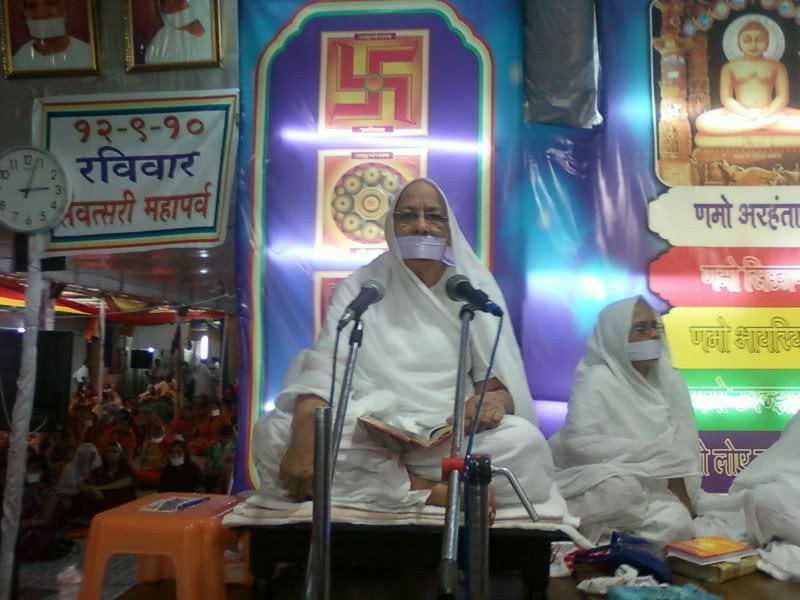 Sadhvi Kanak Shri ji enlightening the devotees about the great history of Lord Mahavira's penance, teachings and the Jains
Sadhvi Kanak Shri ji enlightening the devotees about the great history of Lord Mahavira's penance, teachings and the Jains
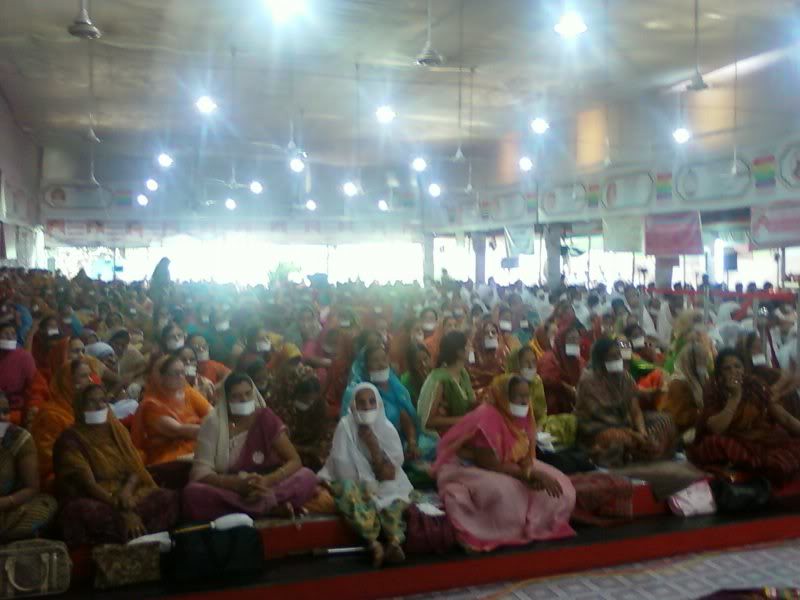 Female Devotees (Shrawikas) practicing Pousadh and listening the heart touching instances of the life of Lord Mahavira
Female Devotees (Shrawikas) practicing Pousadh and listening the heart touching instances of the life of Lord Mahavira
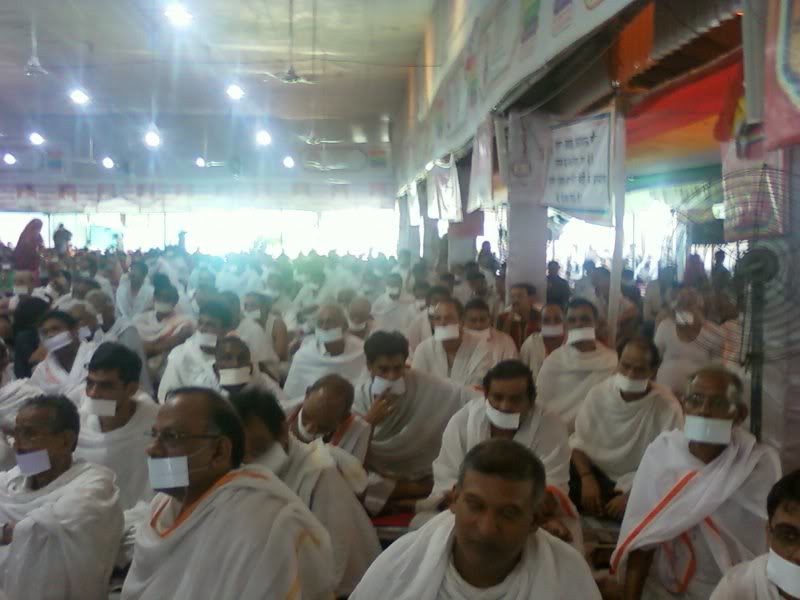 Male Devotees in listening to the discourse
Male Devotees in listening to the discourse
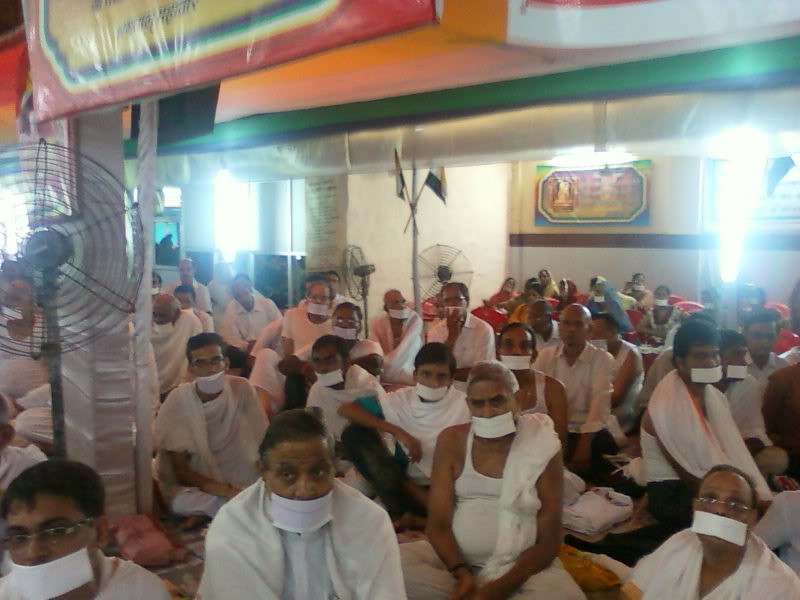 Male Devotees (shrawaks) in Pausadh vrata
Male Devotees (shrawaks) in Pausadh vrata
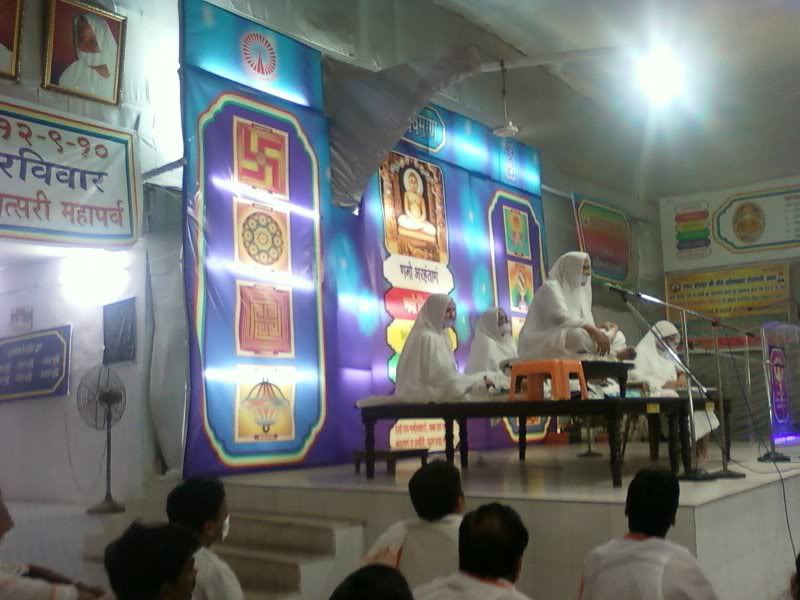 Sadhvi Kanak Shri ji giving discourse on the life and teachings of the Acharyas of Terapanth Sect and their contribution to the mankind
Sadhvi Kanak Shri ji giving discourse on the life and teachings of the Acharyas of Terapanth Sect and their contribution to the mankind
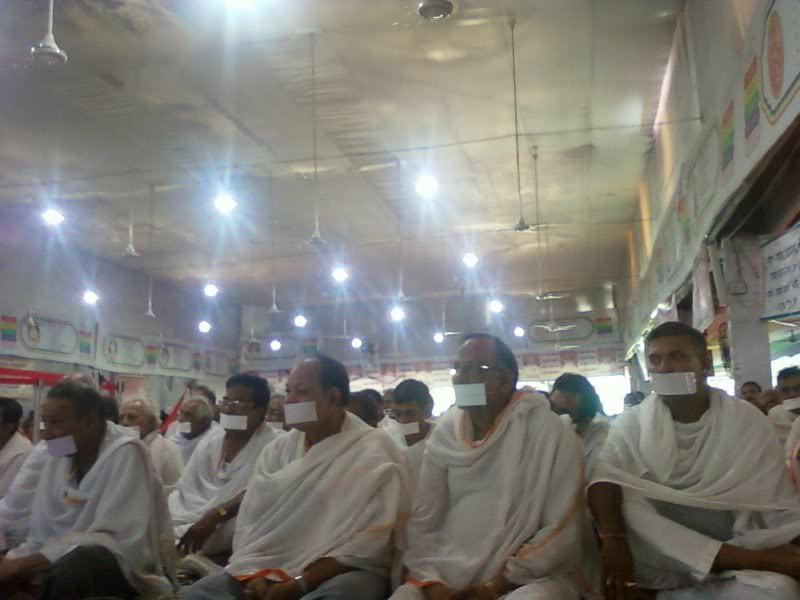 Shrawaks in pausadh vrata
Shrawaks in pausadh vrata
 Packed Sanyam Samwsaran with Shrawaks and Shrawikas
Packed Sanyam Samwsaran with Shrawaks and Shrawikas
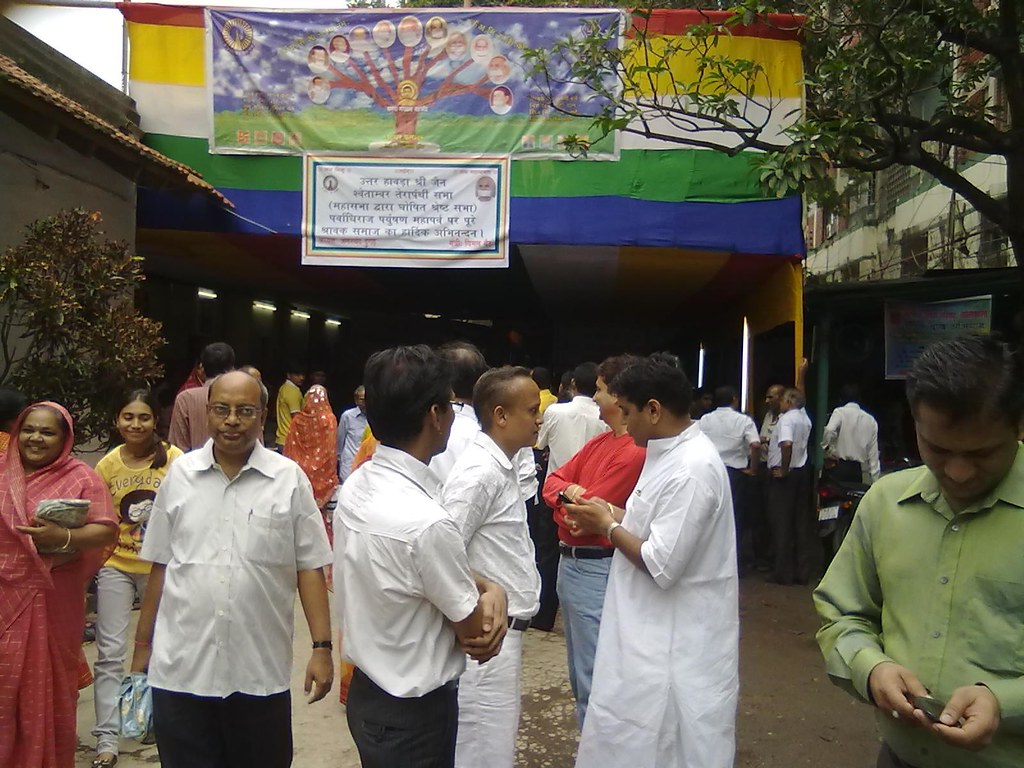 View of the devotees standing outside the packed hall
View of the devotees standing outside the packed hall
 Devotee with Tapashya (fasting) of 8 days accepting vows for fasting
Devotee with Tapashya (fasting) of 8 days accepting vows for fasting
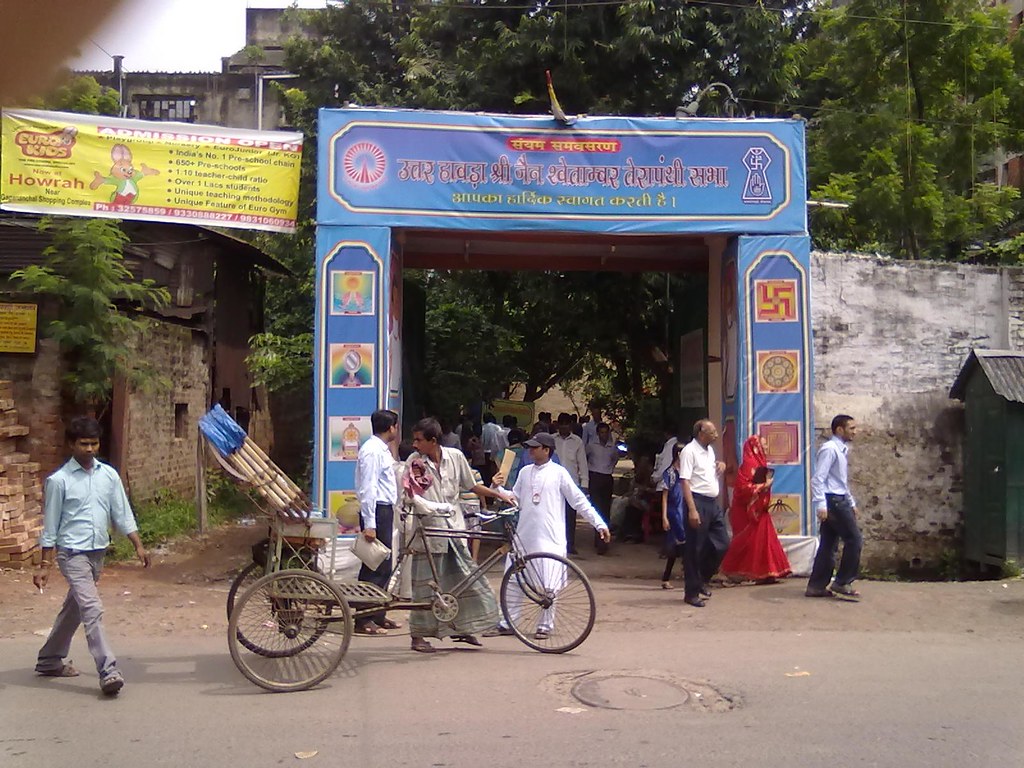 Entrance of Sanyam Samawasaran
Entrance of Sanyam Samawasaran
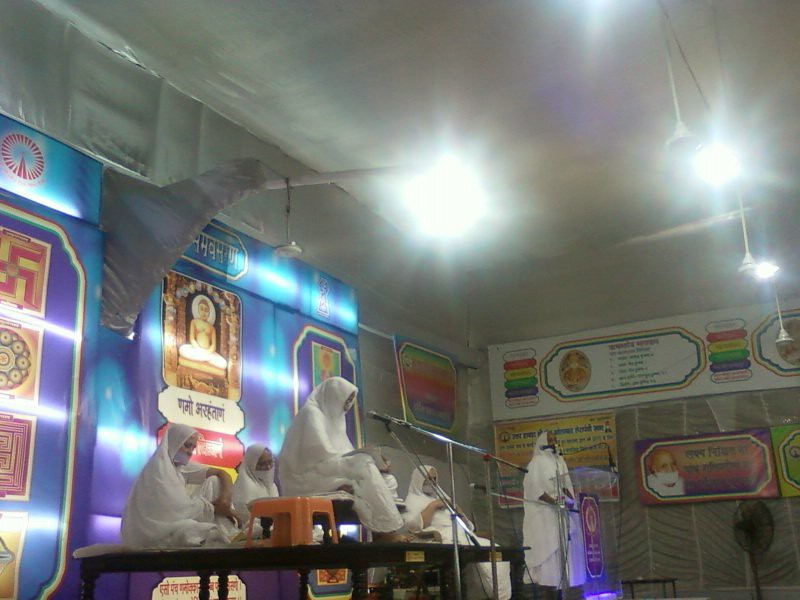 Sadhvi Madhulekha ji speaking about the Great Acharyas of the Jain tradition
Sadhvi Madhulekha ji speaking about the Great Acharyas of the Jain tradition
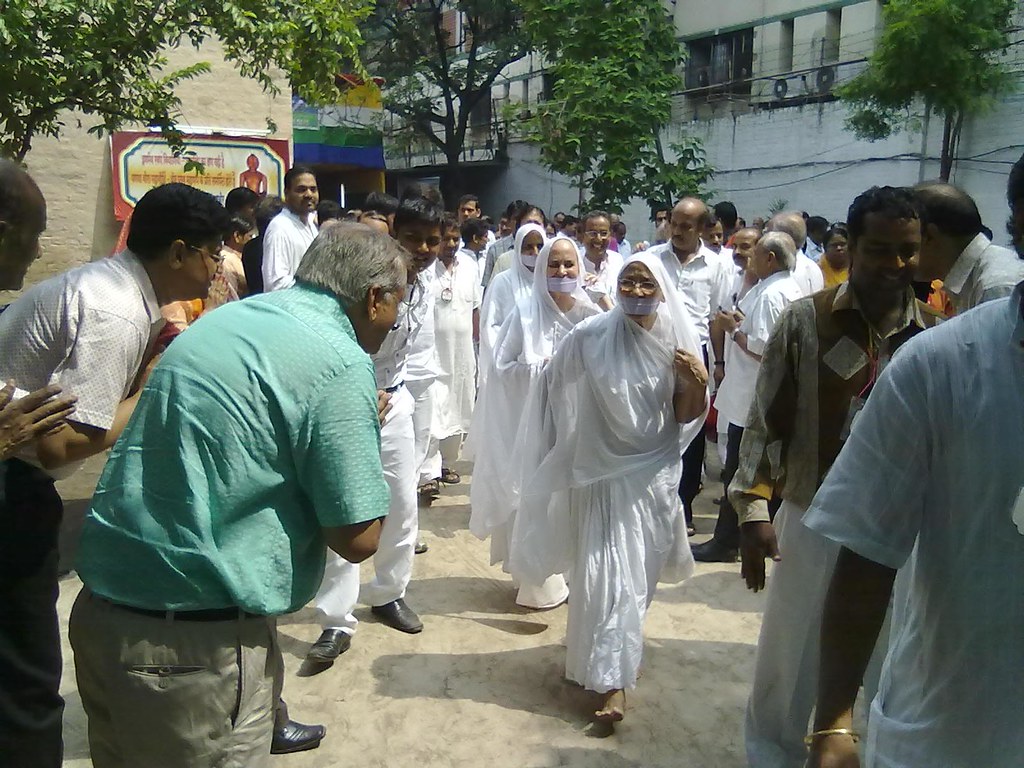 Sadhvi Kanak Shri ji, Sadhvi Veena Kumari ji and Sadhvi Madhulekha ji going to bless the lay followers waiting outside the hall
Sadhvi Kanak Shri ji, Sadhvi Veena Kumari ji and Sadhvi Madhulekha ji going to bless the lay followers waiting outside the hall
 Sadhvi Kanak Shri ji, Sadhvi Veena Kumari ji and Sadhvi Madhulekha ji blessing the crowd of devotees waiting outside the main gate for darshan
Sadhvi Kanak Shri ji, Sadhvi Veena Kumari ji and Sadhvi Madhulekha ji blessing the crowd of devotees waiting outside the main gate for darshan